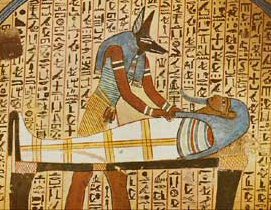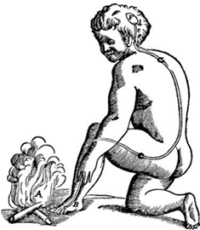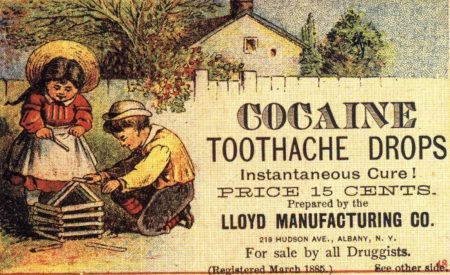The History of Pain Management, a Journey Through Time

Throughout history, people have been searching for ways to ease the pain that comes as a part of everyday life or serious illness. Pain management has come a long way over the years, and today there is a variety of options available to help people find relief. This blog post will look at the history of pain management, from ancient times to the present day. We’ll explore the different methods that have been used over the hundreds or even thousands of years and discuss how modern techniques have improved our ability to treat pain.
It is often said that history repeats itself. And when it comes to the field of pain management, this could not be more accurate. Throughout the years, various treatment methods and medicines have been developed and used to help those who suffer from pain. The best philosophers and healers were always searching for ways to diminish human pain and suffering.
The Code of Hammurabi, a collection of 282 rules from ancient Mesopotamia, included provisions for the management of pain. The Edwin Smith Papyrus, a medical manuscript from 1500 BC, contains descriptions of surgical techniques for the treatment of pain, demonstrating the Egyptians’ advanced understanding of pain control. The Greek physician Galen created a method of pain management that was founded on the idea of balance. The ancient Greeks and Romans both had a profound understanding of how to manage pain.
In the 5th century BC, Greece was home to many great thinkers who laid down some of humanity’s most profound ideas. One such thinker was a philosopher and physician Hippocrates (460-370 BC), regarded by many as “The Father of Modern Medicine”. He was the first Greek writer to use the word “anesthesia” in a medical sense and to connect it to “analgesia”, meaning “insensitivity to pain”. In his numerous medical texts, he described different types of pain and suggested opium poppy plant as a cure. He also prescribed his patients bark and leaves of a willow tree, which is a natural source of aspirin’s main ingredient – salicylic acid.
In 1664, a French philosopher René Descartes proposed an idea that pain is something that travels from an injured area of the body to the brain through a pain pathway – a term still used today – similar to pulling a string that makes a bell ring. This laid the groundwork to understanding pain as mechanical rather than spiritual, something that can be cured by manipulating the pain “fibers”.

In the 16th century, opium was reintroduced to Western medicine and became more and more popular as doctors discovered its ability to provide relief for a variety of ailments: from cholera, dysentery and tuberculosis to rheumatism, insomnia and nervous disorders. It continued to be used as the main anesthetic for the next 200 years until it was gradually replaced by morphine – opium’s more potent cousin.
Morphine was first extracted from poppy plant in 1804 and was marketed as a painkiller. It’s been estimated that over 400,000 soldiers injured in the Civil War relied on the drug for pain relief and consequently grew addicted to it. At the time the condition was branded “soldier’s disease”.
In 1840’s, two new pain-relieving agents were discovered: ether and chloroform. Ether had been used in medicine at that time as a treatment for scurvy and pulmonary inflammation. A Boston dentist William T.G. Morton discovered its pain-relieving properties after administrating it to one of his patients in 1842, and four years later a Georgia physician Crawford Williamson Long successfully used it as a general anesthetic during surgery.
Chloroform began its journey as a cheap pesticide until the Scottish physician Sir James Young Simpson noticed that inhaling its vapors quickly produced anesthetic effect on his patients. It was a riskier one of the two, as care had to be taken with the dosage to avoid lung paralysis, but despite a few fatalities it became widespread enough to be used as pain relief during Queen Victoria’s labor, which popularized it further. Both ether and chloroform became indispensable tools for the Civil War doctors who used them during amputations for wounded soldiers.

Although the South American Incas were chewing coca leaves thousands of years ago, cocaine didn’t make its way to Europe until 1860’s. A cocktail of coca leaves infused in wine became a very popular drink used by members of royal family, politicians and artists alike. The medicinal use of cocaine began in 1880’s, when it was discovered to be a perfect anesthetic for eye surgeries: as well as taking away sensitivity, it reduced bleeding and didn’t have the unpleasant side effects of the available alternatives.
Sigmund Freud, the founder of psychoanalysis, enjoyed recreational use of cocaine. He was very impressed with the effects of the substance, to the point of writing a paper describing and praising its benefits. Cocaine quickly became popular among the general public and is famously known to have been an ingredient in the original Coca-Cola drink. Overtime, the addictive properties of cocaine became more apparent; it was classified as a narcotic and removed from the recipe. Its popularity as an anesthetic declined too, due to increasing accidental overdoses during surgery.
In the 1900’s the use of strong opioids like morphine and heroin was on the rise. It didn’t help that heroin was originally marketed as a cure for morphine addiction. As recently as 1990’s, a promotional video by Purdue Pharma, the manufacturer of a popular opioid, claimed that the drug was safe for long term use and hardly ever caused addiction. In 2007, the company was fined $634.5 million for misleading the public but by then it was too late. The unrestricted use of such medications had already given way to an opioid crisis we are still dealing with today.

During the 20th century, chemists were able to synthesize active ingredients of Aspirin, Paracetamol (Tylenol) and Ibuprofen, which are the most common painkillers currently used for mild and moderate pain. In 1950, American chemist Edward Calvin Kendall was awarded a Nobel Prize for the discovery of cortisone, which led to implementation of another pain relief method particularly effective for joint inflammation – steroid injections. Opioids are still frequently prescribed for strong persistent pain but now that we are aware of the health risks the prescription process is strictly regulated and limited to the lowest dose necessary.

In conclusion, there has been a long and rich history of pain management, with contributions from many different civilizations and cultures. The evolution of pain management has been greatly influenced by the development of anesthesia and antiseptics in the 19th century, the discovery of new medications and technology in the 20th century, and the growing emphasis on non-opioid pain management treatments in recent years. Today, pain management is a multidisciplinary field that offers a wide range of options for the management of pain, with the goal of improving the quality of life for those who suffer from pain.
Today, in the 21st century, as we look back through the history of pain management, we are fortunate to have a wide array of pain medications to choose from depending on the nature, intensity and source of our pain. The best way to ensure the right course of action is to always consult a health professional, who will be able to advise the most effective and suitable treatment option. Please contact Omega Pain Management if you need help with your pain.
References:
Astyrakaki E, Papaioannou A, Askitopoulou H. References to anesthesia, pain, and analgesia in the Hippocratic Collection. Anesth Analg. 2010 Jan 1;110(1):188-94. doi: 10.1213/ane.0b013e3181b188c2. Epub 2009 Oct 27. PMID: 19861359.
Rosenblum A, Marsch LA, Joseph H, Portenoy RK. Opioids and the treatment of chronic pain: controversies, current status, and future directions. Exp Clin Psychopharmacol. 2008 Oct;16(5):405-16. doi: 10.1037/a0013628. PMID: 18837637; PMCID: PMC2711509.
Collier R. A short history of pain management. CMAJ. 2018 Jan 8;190(1):E26-E27. doi: 10.1503/cmaj.109-5523. PMID: 29311105; PMCID: PMC5760261.
https://www.history.com/topics/inventions/ether-and-chloroform
https://www.history.com/topics/crime/history-of-cocaine
https://www.narconon.org/drug-information/cocaine-circa-1860-1900.html
https://www.mayoclinic.org/chronic-pain-medication-decisions/art-20360371
